NREL Partners With Chilkat Indian Village To Improve Housing in Klukwan, Alaska
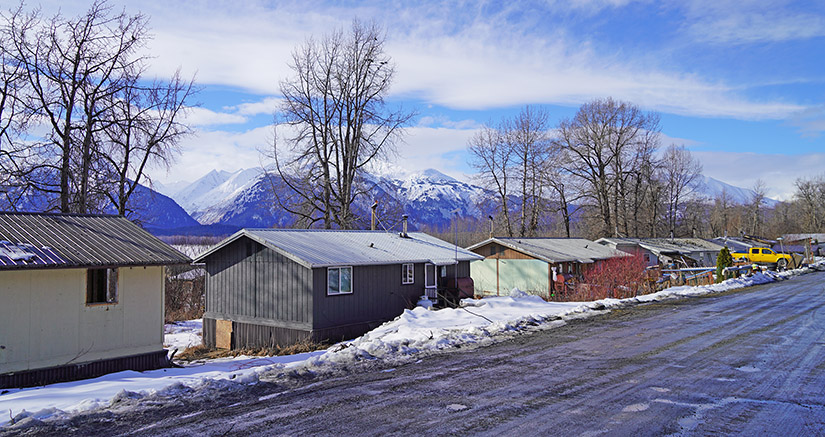
A team of National Renewable Energy Laboratory (NREL) researchers and Tribal staff gathered around the wood stove in Charlie Spud’s home, trying to figure out why it was not drawing air.
“Every time I turn on the bath fan, the stove backdrafts,” said Spud, 61, who built the home 13 years ago with his wife Joanne.
“That’s not good—it can bring carbon monoxide into the home,” said Jack Hébert, a senior research advisor at NREL’s Alaska Campus and a long-time Alaska homebuilder.
The cozy, cedar-sided home overlooks the wide, braided Chilkat River and the massive snowcapped peaks straddling the Alaska-Canada border, where the Tlingit people have lived for thousands of years. Long before Alaska was a state, or the nearby fishing town of Haines appeared, this was a gathering spot for the Chilkat Tlingits (known as the Jilkáat Kwáan) who traveled to these shores by canoe to trade and share feasts of the region’s bounty.
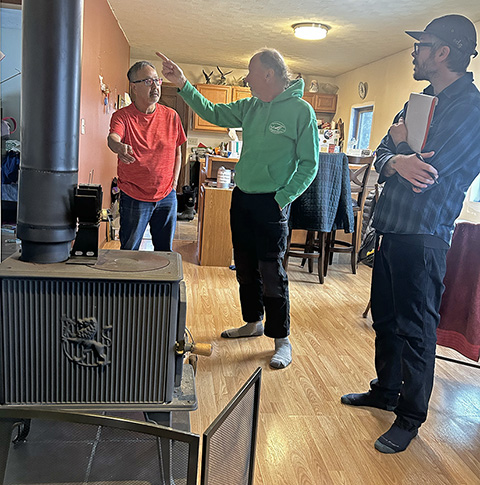
A colorful wood carving on the living room wall honored the eagle—or Ch’áak’—clan that Joanne descends from. Like many in Klukwan, Alaska, Charlie and Joanne still spend a lot of time outdoors, hunting, fishing, and picking berries that grow in the lush Chilkat Valley.
After investigating the stove and crawling around the attic with an infrared camera, the team discovered a lot of air leaking around the stovepipe into the attic, then escaping outside. It was due to stack effect, Hébert said, which occurs when heat rises within a building due to temperature differences between indoors and outdoors.
“So much air is leaking around the pipe that it’s overpowering the fire’s ability to get oxygen. So, the fire has to pull air from inside the stack, which can bring dangerous gases into the home,” Hébert said.
He emphasized the importance of introducing outside combustion air into the area near the stove and made a note on the survey: Seal ceiling penetration around pipe to reduce stack effect.
'Housing and Jobs: You Can’t Build a Community Without Either'
This is one of many problems Klukwan is tackling as part of a $1 million award through the U.S. Housing and Urban Development’s Office of Lead Hazard Control and Healthy Homes. Since 1999, HUD has invested in hundreds of communities across the United States to make low-income households safer, healthier, and more affordable. Over the past decade, NREL has assisted 15 Alaska communities to implement these programs, including Buckland, Gakona, and—currently—Fairbanks Neighborhood Housing Services, helping direct a total of $16 million toward reducing in-home hazards.
The goal of these programs is not only to improve housing but also to build a workforce that benefits local economies.
“This project is about housing and jobs. You can’t build a community without either,” said Shawna Hotch, Tribal liaison for the Tribe, who oversees a variety of initiatives related to housing, energy, health, and more.
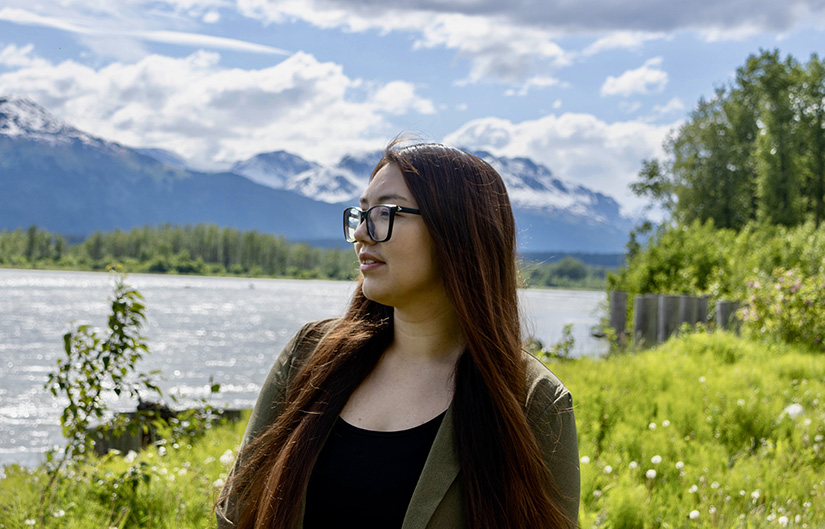
Housing has long been a priority for the small Southeast Alaska community of 81 people. While the village has been around for thousands of years, most of its current housing was built in the 1970s and consists of modular units imported from the Lower 48 states. Today they are dilapidated, leaky, and expensive to heat. Housing surveys conducted in 2023, also in partnership with NREL, revealed high rates of mold, indoor air quality problems, and overcrowding and led the Tribe to pass a resolution declaring a housing emergency.
New housing is critical to the community’s growth, yet high costs have inhibited construction. Many Tribal members share homes with multiple generations, move out of the community, or add mobile homes onto their permanent structures for more space.
Charlie Spud’s daughter, Karlie, left the state four years ago when she had her first child because she could not find housing in Klukwan. Last year, when her brother moved out of their childhood home, Karlie came back to the village. Now she lives there with her daughter and works at the clinic across the street.
“In Klukwan, it’s really bad. If someone in your family passes away, that’s about the only way you can get a house. Some people buy mobile homes or kits from Canada, but there’s nothing affordable that will also keep you warm and comfortable,” Karlie said.
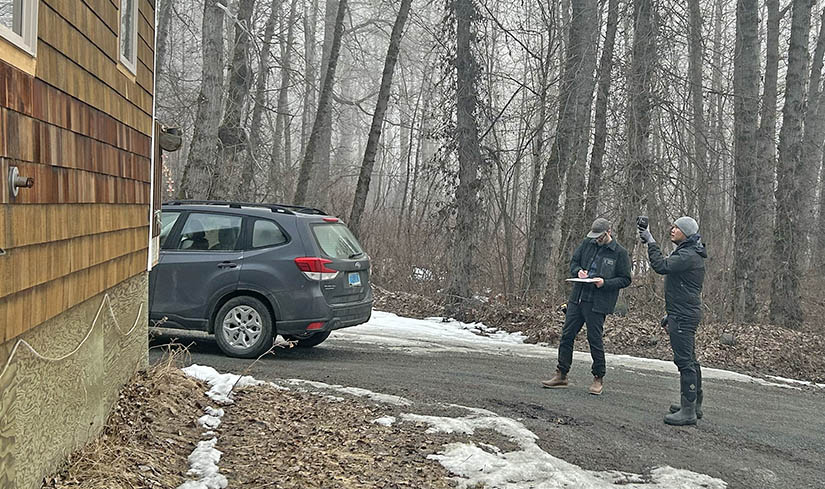
In light of that shortage, they are fixing up what they have. Hotch enlisted NREL’s building and energy experts to perform building assessments and guide the retrofits to ensure they deliver long-term health and economic benefits to residents.
“I love working with NREL. I’m not an energy expert—I work on so many different initiatives related to geohazards, health, and land protections that it’s very valuable to me to be able to trust these Alaskan experts,” Hotch said.
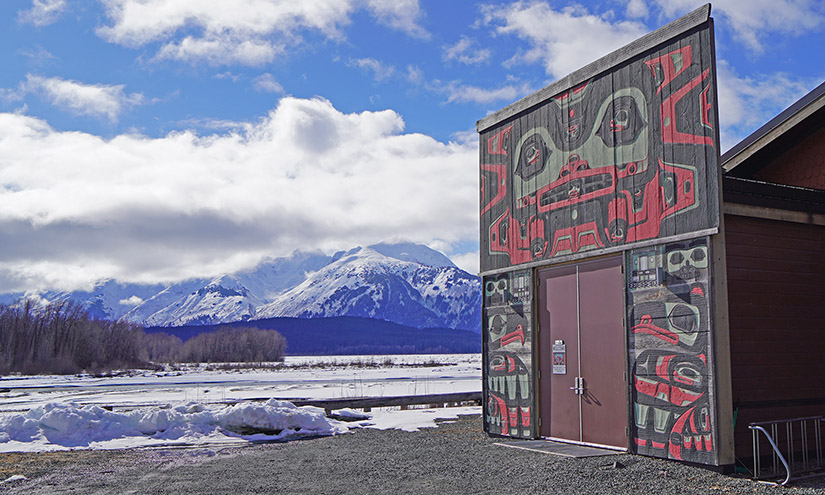
NREL Surveys Inform Retrofit Work To Make Warmer, Safer Housing
In March, the assessment team made up of NREL building experts, Tribal staff, and private contractors visited 11 homes, interviewing residents, testing for lead paint and radon, and inspecting foundations, walls, windows, and appliances. The cold, wet climate of Southeast Alaska can be hard on homes, and many showed signs of moisture and mold. Other residents complained about cold floors, leaky roofs, or broken outlets.
Charlene Katzeek lives in a double-wide trailer on a raised foundation overlooking the Chilkat Mountains. At age 75, she likes listening to audiobooks while she drinks coffee and plays cards. Her daughter, Deanna, the village public safety officer in Klukwan, often stops by to visit and help with housework, since Charlene is losing her eyesight. While the home is in pretty good shape, Charlene is on a fixed income and wants to reduce energy use.
“There’s a big hole under the window. When my husband was alive, he would ask me to go outside and he could wave to me through the trim,” Charlene said, chuckling.
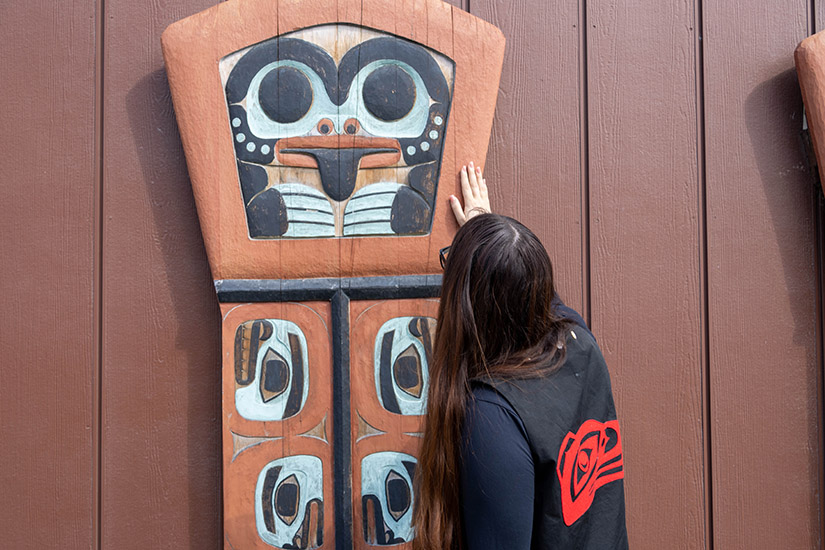
The assessment team found additional cold spots in the house that could be sealed and suggested upgrades to improve indoor air quality, such as removing old carpet and increasing ventilation.
“In a cold climate, we build very tight homes and spend so much of our time inside in the winter,” NREL’s Hébert said. “Bringing fresh air into the home keeps everyone healthy and can really address our exceptionally high rates of respiratory illness in Alaska.”
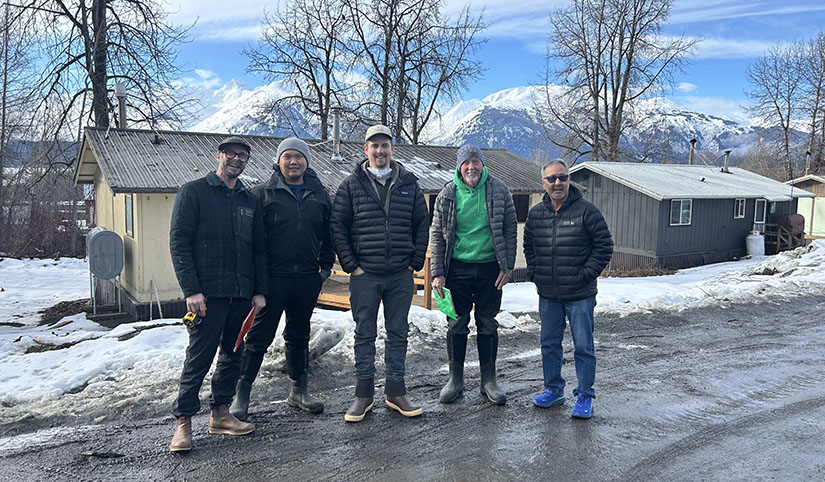
After finishing the assessments, the team started poring over the data to make a plan for each house. Retrofit work is expected to begin this summer, as fishing, road construction, and other seasonal jobs take off.
Just like those efforts, this project will strengthen the economy and make Klukwan a healthier, more vibrant place to live.
Learn more about research at NREL’s Alaska Campus.
Last Updated May 1, 2025
